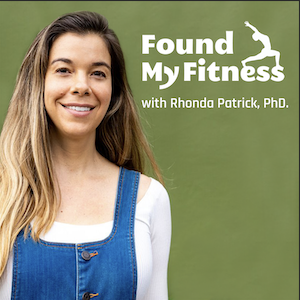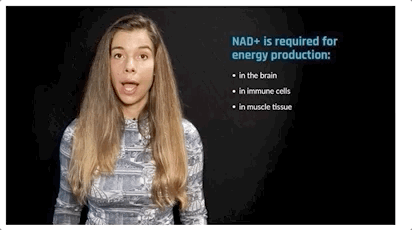Exercise as a treatment for depression via suppression of inflammation. | Charles Raison
Get the full length version of this episode as a podcast.
This episode will make a great companion for a long drive.
The Omega-3 Supplementation Guide
A blueprint for choosing the right fish oil supplement — filled with specific recommendations, guidelines for interpreting testing data, and dosage protocols.
A subgroup of depressed people has elevated inflammation and distinct functional connectivity in their brains. Some depressed patients may benefit from a burst of acute inflammation, such as occurs with hyperthermia or exercise. Exercise acutely activates various inflammatory pathways, but long-term contributes to a reduction in chronic inflammation. In this clip, Dr. Charles Raison explains how agents that interact with the immune system may play a subtle and complex role in depression.
- Charles: The reason that depression is associated with increased inflammation is because there’s a subgroup of depressed people that have elevated inflammation, and they’re different than depressed people that don’t. This is the work of my mentor, Andy Miller, in the last five or seven years. They’ve just been world leader showing that if you take regular old, depressed people, he got like 250 of them and did this amazing series of studies. People that have, there’s not a cut off, but the people that have higher levels of inflammation and depressed, have different functional connectivity in their brains than people that have lower levels. We showed, Andy and I showed years earlier that they also have very different responses to immune agents than people that have lower levels of inflammation. So I think in fact, that there’s a subgroup of very depressed people that might benefit from a kind of a not chronic inflammation, but a hit of inflammation. When we get around to talking about hyperthermia, I can tell you that there’s some evidence that hyperthermia does that, exercise does that. You know, exercise acutely activates certain types of pathways we think about as being inflammatory. So I think in the next 10 years, what we’re going to find out is that, in fact, the immune system is probably involved in every case of depression, but that the pattern is going to be subtler and more complex than something just saying that depression is associated with increased inflammation. That’s probably not going to turn out to be true.
- Rhonda: And with the exercise, I’ve read now several studies where exercise is, aerobic exercise and now even strength training exercise, how it’s almost in some cases, as potent as some of these antidepressants that are out there in terms of treatment. And as you mentioned, you know, and this is kind of why I was thinking of this hormetic effect, because exercise does elevate inflammatory processes acutely and then there’s a response. Yeah, anti-inflammatory response and anti-oxidative that, you know, is much more powerful than the initial stressor that occurred.
A mood disorder characterized by profound sadness, fatigue, altered sleep and appetite, as well as feelings of guilt or low self-worth. Depression is often accompanied by perturbations in metabolic, hormonal, and immune function. A critical element in the pathophysiology of depression is inflammation. As a result, elevated biomarkers of inflammation, including the proinflammatory cytokines interleukin-6 and tumor necrosis factor-alpha, are commonly observed in depressed people. Although selective serotonin reuptake inhibitors and cognitive behavioral therapy typically form the first line of treatment for people who have depression, several non-pharmacological adjunct therapies have demonstrated effectiveness in modulating depressive symptoms, including exercise, dietary modification (especially interventions that capitalize on circadian rhythms), meditation, sauna use, and light therapy, among others.
Important for the endocrine enhancing properties of exercise. Exerkines are exercise-induced hormonal-like factors which mediate the systemic benefits of exercise through autocrine, paracrine, and/or endocrine properties.[1]
- ^ Helge, Jørn Wulff; Moritz, Thomas; Morville, Thomas; Clemmensen, Christoffer; Dela, Flemming (2020). Plasma Metabolome Profiling Of Resistance Exercise And Endurance Exercise In Humans Cell Reports 33, 13.
Biological responses to low-dose exposures to toxins or other stressors such as exercise, heat, cold, fasting, and xenohormetics. Hormetic responses are generally favorable and elicit a wide array of protective mechanisms. Examples of xenohormetic substances include plant polyphenols – molecules that plants produce in response to stress. Some evidence suggests plant polyphenols may have longevity-conferring effects when consumed in the diet.
A critical element of the body’s immune response. Inflammation occurs when the body is exposed to harmful stimuli, such as pathogens, damaged cells, or irritants. It is a protective response that involves immune cells, cell-signaling proteins, and pro-inflammatory factors. Acute inflammation occurs after minor injuries or infections and is characterized by local redness, swelling, or fever. Chronic inflammation occurs on the cellular level in response to toxins or other stressors and is often “invisible.” It plays a key role in the development of many chronic diseases, including cancer, cardiovascular disease, and diabetes.
Member only extras:
Learn more about the advantages of a premium membership by clicking below.
Get email updates with the latest curated healthspan research
Support our work

Every other week premium members receive a special edition newsletter that summarizes all of the latest healthspan research.
Depression News
- Ketogenic diets show meaningful reductions in depressive symptoms, with more mixed results for anxiety.
- The ketogenic diet may alleviate depressive symptoms within as little as two weeks.
- Childhood body composition and fitness influence anxiety and depression—higher visceral fat increases risk, while greater lean mass and cardiorespiratory fitness offer protection.
- A diet high in lutein and zeaxanthin, carotenoid pigments found in colorful vegetables, is linked to a 32% lower risk of depression.
- Restrictive diets, particularly low-calorie and low-nutrient, may lead to an increase in depressive symptoms—especially among men and those with higher body mass index.






